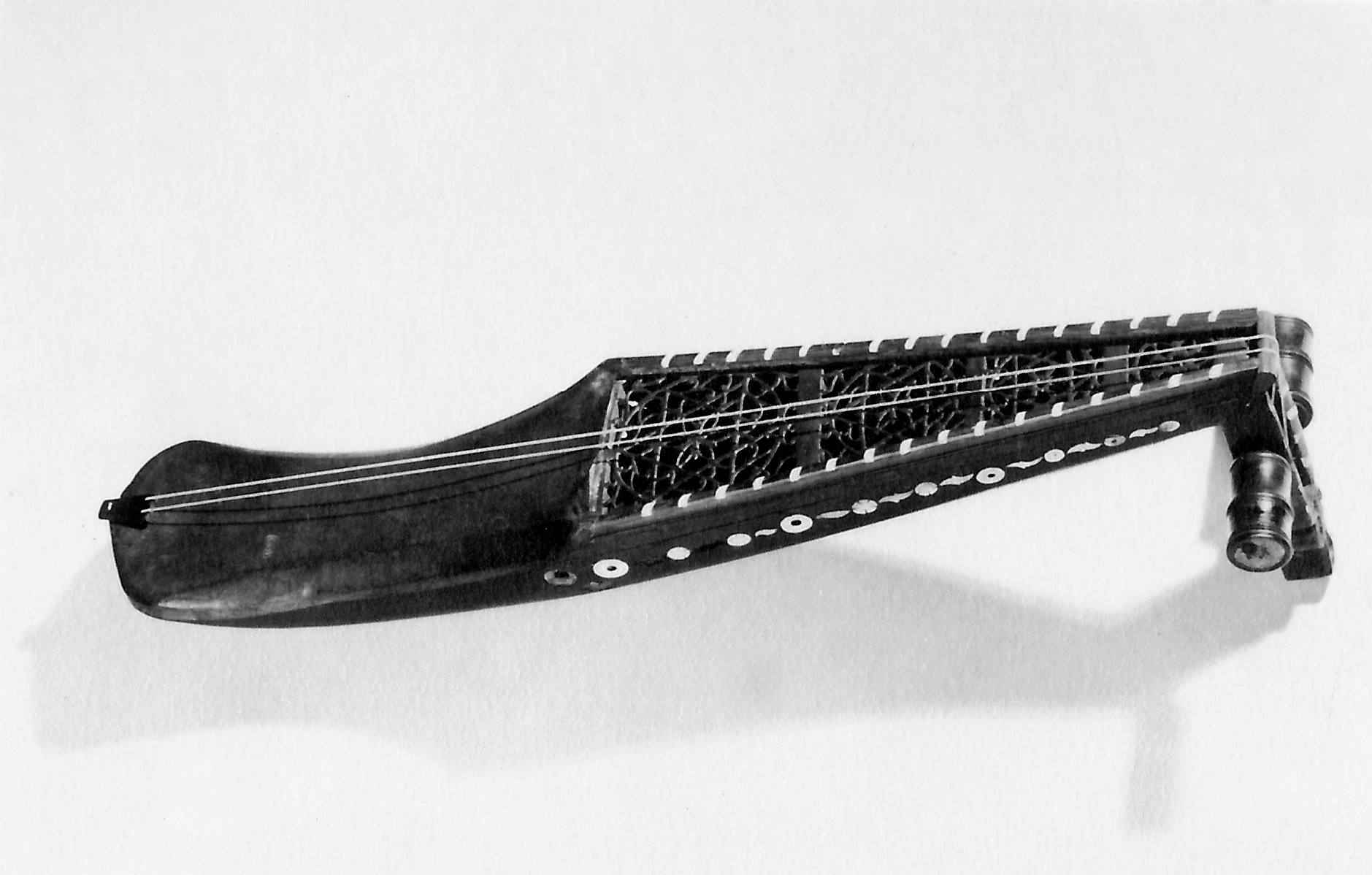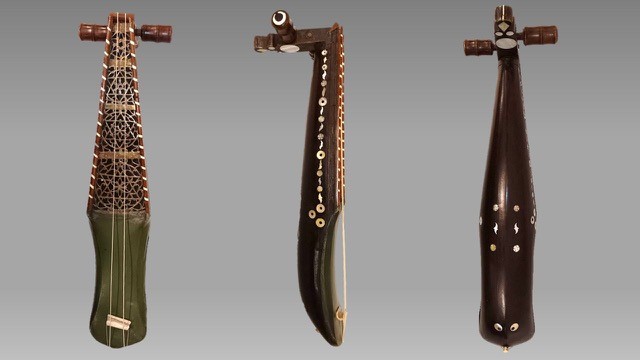Rabāb
This type of rabāb is one of the most important instruments in traditional Arabic ensembles of Tunisia, Algeria, and Morocco. It made its way into Spain with the Moors and from about 1300 lent its name to the early European fiddle, the rebec, which was originally played with the rounded end on the lap just as the rabāb is played today. Short-necked, bowed lutes from Algeria are made with decorative pierced brass fingerboards while those from Morocco use wood to cover the hollowed neck. The dolphin represented on the back of the instrument is a symbol of good luck for these Demitarian cultures.
Due to rights restrictions, this image cannot be enlarged, viewed at full screen, or downloaded.
This artwork is meant to be viewed from right to left. Scroll left to view more.




.jpg)
.jpg)
.jpg)
